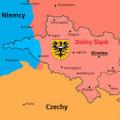The Golden Horde (Ulus Jochi) is a state centered in the lower Volga region, founded in 1243 by the Mongol Khan Baty (1237-1255), the son of Jochi, the grandson of Genghis Khan. Until 1266, the khans of the Golden Horde recognized the power of the Great Khan in Karakorum, and then in Khanbalik (Beijing). The bulk of the nomadic population of the Golden Horde were Cumans (Kypchaks). The sedentary population is the Volga Bulgars, Mordovians, Mari, Khorezmians. Since 1312 - Islamic state. Disappeared in the 16th century.
The Khan's Golden Horde is a living historical group with a unique niche: the nomadic life of the mid-13th century in the northwestern part of the Mongol Empire. Originally ruled by one of Chinggis Kan's grandsons, this vast corner of the Mongol kingdom was a crossroads between East and West. The Horde is dedicated to researching and recreating the arts and skills of this period. Mostly, however, the members dress up in makeshift armor and beat each other with rotan swords and other weapons.
Anyone who could appear at the trial of the khan, the Mongol ruler, near the Mongol Empire, stretching from Korea to Hungary, and international exchange Thriving along the Silk Road, Horde members have many cultures to draw on - sometimes with unlikely results. For example, it would be unusual to see a Japanese samurai fight a medieval knight at a Horde gathering.
The power of the khans of the Golden Horde covered the territory of a significant part modern Russia(Besides Eastern Siberia, Of the Far East and regions of the Far North), northern and western Kazakhstan, Ukraine, part of Uzbekistan (Khorezm) and Turkmenistan. The Russian principalities were not directly ruled by the Golden Horde. The officials of the Horde, the Baskaks, collected tribute in the Russian territories, but later this function was transferred to the subordinate Russian princes. To keep the Russian lands in obedience and for plundering purposes, the Tatar detachments made frequent punitive campaigns against Russia. During the second half of the 13th century alone, there were fourteen such campaigns. In the south, in Asia, the Golden Horde bordered on the Chagatai (Dzhagatai) ulus.
The Mongol Warriors are the most popular characters, but only one Horde member ever makes it to the Great Kahn, and that is Chris Greywolf, the group's founder. The Horde has about 65 members, Greywolf says, although he admits there were times when he was the only guy to show up at his weekly Sunday meetings.
Tensions between Mongols and medieval knights arose for a variety of reasons, including the aggravating ability of archers to kill knights at the start of a battle. In the end, the knights and Mongols went their own ways. When enough members get together, they fight between the armies. Sometimes battles include historical twists and turns, such as the attack on the Great Chinese wall or the invasion of Japan. The rules of war are the same as those used by the society of creative anachronism, and the fighters judged by themselves whether they were hit, wounded or killed.
The capital of the Golden Horde under Batu was the city of Sarai-Batu (near modern Astrakhan); in the first half of the XIV century, the capital was moved to Saray-Berk (founded by Khan Berke (1255-1266), near present-day Volgograd).
The Golden Horde was a multinational and multi-structured state. The major centers of mainly caravan trade were Saray-Batu, Saray-Berke, Urgench, in Crimean cities Sudak, Kaffa, Azak (Azov) on the Sea of Azov and others were Genoese trading colonies.
Weapons include swords, spears, axes, bows and arrows, and even a working catapult. Despite the use of armor, shields, soft weapons, and other precautions, fighters usually end up bruised and bloody. But it's all fun. “This is the only way to hit someone, if someone is not mad at you,” says one of the regulars.
After the battle, the Horde sometimes celebrates in the kitchen of one of the lands captured by the Mongols. This usually means the exit of the Chinese, Koreans, Indians or Vietnamese. The Golden Horde was a Mongol army that swept Eastern Europe in the 13th century. The name may have been inspired by the yellow tents of the Mongols, but no one knows for sure.
At the head of the state were the descendants of Genghis Khan - tore. In especially important cases of political life, national assemblies (kurultai) were convened. State affairs were led by the first minister (beklyare-bek - the prince over the princes), to whom the ministers, the vezirs, were subordinate. Plenipotentiary representatives - darugi, whose main duty was to collect taxes and taxes, were sent to the cities and their subordinate regions. Often, along with the darugs, military leaders were appointed - baskaks. State structure was of a paramilitary nature, since military and administrative positions, as a rule, were not separated. The most important positions were held by members of the ruling dynasty, princes (oglans), who owned inheritances in the Golden Horde and stood at the head of the army. The main command cadres of the troops emerged from the ranks (noins) and tarkhans - temniks, thousanders, centurions, as well as bakauly (officials who distributed military content, booty, etc.).
Starikov's blog from Arthur. Jacques Attali introduced this term into circulation, and an interesting article on this topic was published in the "Economy and Us" environment. To understand the neon phenomenon of pro-American globalism, let's look at today's economic model... Imagine the simplest word: a 100 rubles harvest of corn and turnips. To receive these 100 rubles, a resident farmer must wait one year. And not only wait, but also invest: either your own job, or pay for agricultural workers who will then work.
You have to spend money on seeds and amortizing technologies for fertilization and irrigation, in short, for a lot of things. When the harvest is finally offered for sale, you receive $ 100. This only applies to the condition that nothing rots and no residue remains! However, the profit is not 100 rubles.
The trading colonies of the Genoese in the Crimea (captaincy of Gothia) and at the mouth of the Don were used by the Horde for trade in cloth, fabrics and linen canvas, weapons, women's jewelry, jewelry, precious stones, spices, incense, furs, leather, honey, wax, salt, grain , forest, fish, caviar, olive oil.
The Golden Horde sold slaves and booty captured by the Horde troops during military campaigns to the Genoese merchants.
Well, if it's 20 rubles, everything else covers the costs. Average level profitability for farmers is 7-10%, but we are pleased: let it be 20%! But everything is completely different if you are not an agricultural land producer, but a neonomist of globalism! When you conquer foreign crops, you are not affected by all costs! When we talk about robbery, forced consumption, corn and turnips, you will receive a net profit for these 100 rubles, while deprived settlers will be sitting on the nose with a deficit of 80 rubles.
A nomad, as always with nomads, comes, robs and leaves. He keeps all the profits for himself, and he leaves all the losses in cremated ruins, and he is not going to return to them. We talked about the simplest things - corn and beets; Imagine, we are talking about forests, gems, oil, natural gas, gold ore, amber sources and rare earths!
Trade routes began from the Crimean trading cities, leading both to southern Europe and in Central Asia, India and China. Trade routes leading to Central Asia and Iran passed along the Volga.
Already during its formation, the Golden Horde was divided into uluses belonging to 14 sons of Jochi: 13 brothers were semi-independent sovereigns subordinate to the supreme power of Batu.
The economic basis for the formation of neonomies is very, very serious. They rose up for a reason as soon as they were first mentioned by Jacques Attali, a Freemason. the highest level enlightenment. In his books, which have the status of the Bilderberg Manifesto of the World Government, Jacques Attali deals with Masonic scenarios of social evolution, at the global level and for the next quarter century, and explores the scenarios of their economic, political, social and ideological organization.
According to Attali, democracy is the best political system, the flow of trade is the engine of progress, and the omnipotence of money is the fairest government order. According to Attali, globalization is creating a new, nomadic elite that must be torn out of all its national roots.
After the assassination of Khan Janibek in 1357, the turmoil began, indicating the beginning of the collapse of the unified state. From 1357 to 1380, more than 25 khans stayed on the Golden Horde throne.
In 1360-1370, temnik Mamai became the de facto ruler. In the early 1360s, Khorezm fell away from the Golden Horde, and in 1362 the Lithuanian prince Olgerd seized lands in the Dnieper river basin, and Astrakhan was separated. In addition, Mamai had to face the growing alliance of the Russian principalities led by Moscow. Mamai's attempt to weaken Russia again by organizing a huge predatory campaign led to the defeat of the Tatars by the united Russian troops in the Battle of Kulikovo in 1380.
Moreover, the society of the future is far from utopia. Poverty will continue to blend with wealth, but this time on a global scale. This concept has a "person" - an addition to credit card, a nomad in a global professional distribution, no family, no home.
In the end, the emergence of global or global nomads or neonomy gradually became completely desecrated and not worth mentioning in Western political science. The West sees itself as a neonomic horde, like the modern reincarnation of Genghis Khan. High incomes from the pride of the economy require only one thing: the possibility of robbers leaving the plundered territories. If the robber does not leave, he will remain sitting on the pile of debris that he left; Instead of a comfortable life, he gets the ruins of tomorrow.
Under Khan Tokhtamysh (1380-95), the troubles ceased, and the central government began to control the main territory of the Golden Horde. Tokhtamysh in 1380 defeated the army of Mamai on the Kalka River, in 1382 he went to Moscow, which he captured by deception and burned. After strengthening his power, he opposed Tamerlane. As a result of a series of devastating campaigns, Tamerlane defeated the troops of Tokhtamysh, captured and destroyed the Volga cities, including Saray-Berke, robbed the cities of the Crimea, etc. The Golden Horde was struck from which it could no longer recover.
Globalism cannot abandon geopolitical and macroeconomic banditry, because this is the basis of its maximum income. But if globalism cannot break with banditry, then it cannot preserve human civilization. Neonomy turned out to be such gravediggers of civilization as their early predecessors, the nomads of the Middle Ages.
Title and boundaries
It would be interesting to note that the crystallization of the West as a new Golden Horde in time coincides with the restoration of the medieval realities of Russia. We were taught that history is linear, that it never repeats itself, that it starts forever, and so on. In fact, what modern man can easily convince is the simplicity of the story, not the exception. Any, even the most archaic, stage of the past can return; Everything that happened can be repeated.
In the early 20s. The Siberian Khanate was formed in the 15th century, in the 40s. - The Nogai Horde, then the Kazan Khanate (1438) and the Crimean Khanate (1443), and in the 60s. - Kazakh, Uzbek Khanates, as well as Astrakhan Khanates. In the 15th century, the dependence of Russia on the Golden Horde significantly weakened. In 1480 Akhmat, the khan of the Great Horde, who was for some time the successor of the Golden Horde, tried to obtain obedience from Ivan III, but this attempt ended in failure. In 1480, the Russian people finally freed themselves from the Tatar-Mongol yoke. The Great Horde ceased to exist in early XVI century.
The new and the unprecedented is rare in history, but the repetition and re-recording of the "good old days" is abundant and consistent. The century has been in a state of feudal disunity, which is artificially maintained by the Horde in order to more easily manage the divided.
The tiny brothers, worried about their specific arbitrariness, are looking for protection from the horde of the landowner, the strengthening of Moscow. The legality of the prince is a semblance of the Horde; there are no other forms of legitimacy for him. Accordingly, he seeks support from the foreign and predatory Horde against the orthodox and legitimate Grand Duke of Moscow.
The phenomenon of the Golden Horde still causes serious controversy among historians: some consider it a powerful medieval state, according to others, it was part of the Russian lands, and for others it did not exist at all.
Why the Golden Horde?
In Russian sources, the term "Golden Horde" appears only in 1556 in the "Kazan history", although among the Turkic peoples this phrase occurs much earlier.
Formation of the Golden Horde
The relationship between Russia and the Horde is associated with complete slavish submission, which gradually merges into subconscious resistance, while preserving the khan. There are 100 years between the battle at the Kulikovo Pole and the complete liberation. Many years could pass between Putin's steps to unify the Russian lands and the end of external rule.
It is clear that foreign rule has not been completely abolished, and Russia continues to pay tribute, which at the same time calms the Horde by collecting its lands. Today, many are unhappy with Putin's slowness and half-heartedness; but behind it is a sober assessment of their own abilities and the might of the Golden Horde. It is not yet clear that this great opposition will end: history is not predetermined, and the Horde can still prevail over the seedlings of the national and civilizational self-confidence of the people, as in the 90s, us in the Catapult Stone Age ago.
However, the historian GV Vernadsky claims that in the Russian chronicles the term "Golden Horde" was originally called the tent of Khan Guyuk. The Arab traveler Ibn Battuta wrote about this, noting that the tents of the Horde khans were covered with plates of gilded silver.
But there is another version according to which the term "golden" is synonymous with the words "central" or "middle". This is precisely the position occupied by the Golden Horde after the collapse of the Mongol state.
The formation and collapse of the empire of Genghis Khan
Another fact is that a victorious horde is as useless as a beaten horde. Globalism, which has chosen as its main form of value-added income the plundering of peoples, grinding cities and continents into dust, is the enemy of culture. He is the enemy of the production economy, equivalent exchange. He is an enemy of the future because he leaves nothing for the future. Globalism is the scavenger of the future, as the terrible destruction of educational cycles it has created around the world pushes survivors towards the most backward and archaic forms of existence.
As for the word "horde", in Persian sources it meant a mobile camp or headquarters, later it was used in relation to the whole state. In ancient Russia, an army was usually called a horde.
Borders
The Golden Horde is a fragment of the once mighty empire of Genghis Khan. By 1224, the Great Khan divided his vast possessions between his sons: one of the largest uluses with the center in the Lower Volga region went to the eldest son, Jochi.
The struggle of Russia against the Mongol yoke, its results and consequences
The Horde is just a horde: it flies in, steals it, and then drops everything to return to London or Switzerland. Therefore, the struggle of Russia against neonomads is not only a struggle for the economic, political and social liberation of the Russian people from the Golden Horde of Globalism. Without any pathos, the struggle for the future of all mankind. It is a fight for the right of people to develop; the right to peaceful, creative efforts; the right to self-improvement.
The more a nation possesses natural resources and social achievements, the more attractive it becomes a victim of neonomads. Let's say Ukraine was richer in all aspects than Belarus; accordingly, the Horde focused its efforts mainly on the Ukraine rather than on Belarus.
The borders of the Jochi ulus, later the Golden Horde, were finally formed after the Western campaign (1236-1242), in which his son Batu participated (in Russian sources Batu). In the east, the Golden Horde included the Aral lake, in the west - Crimean peninsula, in the south it was adjacent to Iran, and in the north it rested against the Ural Mountains.
Device
The judgment of the Mongols as purely nomads and herders should probably become a thing of the past. The vast territories of the Golden Horde required reasonable management. After the final separation from Karakorum, the center of the Mongol Empire, the Golden Horde is divided into two wings - western and eastern, and each has its own capital - in the first Sarai, in the second - the Horde-Bazar. In total, according to archaeologists, the number of cities in the Golden Horde reached 150!
The global parasite - the globalism of the financial dollar - has no prospects. He lives literally from day to day in the present moment, in the eagerness of robbery, without even thinking about the near future. Meanwhile, zones of chaos and black madness are one step behind the bankers' crusades on the world map, literally like ink blots. Globalism sets fire to one house after another in order to rob the inhabitants. After the robbery, he whistles and forgets what happened, but the fire remains and grows on its own with its own logic of fire.
Deserts and wild fields, the wounds of financial fraud by speculators and cunning thieves themselves do not heal, especially since there is no one and nothing to heal. Bankers are getting richer, people are sinking into prehistoric primitiveness. The little princes sell their people and their faith in things big and small for the horde. The Poroshenko and Turchinovs of this world are exploiting millions of lives in hundreds of bank accounts.
After 1254, the political and economic center of the state completely passes into Sarai (located near modern Astrakhan), whose population at the time of its heyday reached 75 thousand people - quite enough by medieval standards. Big City... Here, minting of coins is being established, pottery, jewelry, glass-blowing crafts, as well as smelting and metal processing are developing. Sewerage and water supply were installed in the city.
Sarai was a multinational city - here the Mongols, Russians, Tatars, Alans, Bulgars, Byzantines and other peoples lived peacefully. The Horde, being an Islamic state, tolerated other faiths. In 1261, a diocese of the Russian Orthodox Church appeared in Sarai, and later a Catholic bishopric.
The cities of the Golden Horde are gradually turning into large centers of caravan trade. Here you can find everything - from silk and spices, to weapons and precious stones... The state is actively developing its trade zone: caravan routes from the Horde cities lead both to Europe and Russia, as well as to India and China.
Horde and Rus
In Russian historiography, for a long time, the main concept that characterizes the relationship between Russia and the Golden Horde was "yoke". They drew us terrible pictures of the Mongol colonization of Russian lands, when wild hordes of nomads destroyed everyone and everything on their way, and those who survived were turned into slavery.
However, there was no term “yoke” in the Russian chronicles. It first appears in the works of the Polish historian Jan Dlugosz in the second half of the 15th century. Moreover, the Russian princes and Mongol khans, according to the researchers, preferred to negotiate rather than expose the lands to ruin.
LN Gumilev, by the way, considered the relationship between Russia and the Horde a beneficial military-political alliance, and N.M. Karamzin noted the most important role of the Horde in the rise of the Moscow principality.
It is known that Alexander Nevsky, having enlisted the support of the Mongols and insured his rear, was able to expel the Swedes and Germans from northwestern Russia. And in 1269, when the crusaders were besieging the walls of Novgorod, a Mongol detachment helped the Russians repel their attack. The Horde sided with Nevsky in his conflict with the Russian nobility, who in turn helped her resolve inter-dynastic disputes.
Of course, a significant part of the Russian lands was conquered by the Mongols and levied tribute, but the scale of the devastation is probably greatly exaggerated.
The princes who wished to cooperate received so-called "labels" from the khans, becoming, in fact, the Horde governors. The burden of duty for the lands controlled by the princes was significantly reduced. No matter how humiliating vassal dependence was, it still preserved the autonomy of the Russian principalities and prevented bloody wars.
The Church was completely freed by the Horde from paying tribute. The first label was issued to the clergy - Metropolitan Kirill Khan Mengu-Temir. History has preserved for us the words of the khan: "We gave favor, priests and monks and all poor people, but with a right heart they pray to God for us, and for our tribe without sorrow, bless us, but not curse us." The label ensured freedom of religion and the inviolability of church property.
G. V. Nosovsky and A. T. Fomenko in " New chronology"Put forward a very bold hypothesis: Russia and the Horde are one and the same state. They easily transform Batu into Yaroslav the Wise, Tokhtamysh into Dmitry Donskoy, and the capital of the Horde Sarai is transferred to Veliky Novgorod. However, the official history of this version is more than categorical.
Wars
Without a doubt, the Mongols were best at fighting. True, they took for the most part not by skill, but by number. Conquer space from Sea of Japan before the Danube, the armies of Genghis Khan and his descendants were helped by the conquered peoples - Polovtsy, Tatars, Nogais, Bulgars, Chinese and even Russians. The Golden Horde was unable to keep the empire within its former limits, however, it cannot be denied militancy. The maneuverable cavalry, numbering hundreds of thousands of horsemen, forced many to surrender.
For the time being, it was possible to maintain a fragile balance in relations between Russia and the Horde. But when the appetites of the temnik Mamai were played out in earnest, the contradictions between the parties resulted in the legendary battle on the Kulikovo field (1380). Its result was the defeat of the Mongol army and the weakening of the Horde. This event ends the period of the "Great Hush", when the Golden Horde was in a fever from civil strife and dynastic troubles.
The confusion ceased and power was strengthened with the accession to the throne of Tokhtamysh. In 1382 he again went to Moscow and resumed the payment of tribute. However, exhausting wars with the more combat-ready army of Tamerlane, in the end, undermined the former might of the Horde and for a long time discouraged the desire to make aggressive campaigns.
In the next century, the Golden Horde gradually began to "crumble" into pieces. So, one after another, the Siberian, Uzbek, Astrakhan, Crimean, Kazan khanates and the Nogai Horde appeared within its borders. The weakening attempts of the Golden Horde to carry out punitive actions were suppressed by Ivan III. The famous "Standing on the Ugra" (1480) did not develop into a large-scale battle, but finally broke the last Horde Khan Akhmat. From that time on, the Golden Horde formally ceased to exist.




